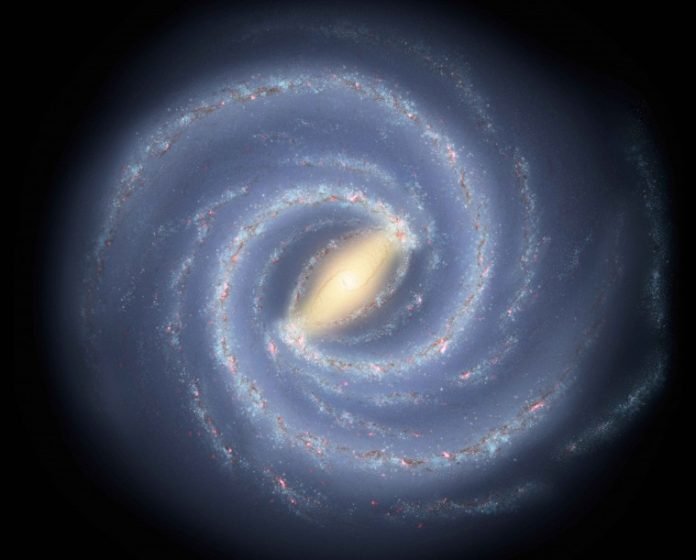
Astonishing new findings from astronomers at the University of Arizona have turned our understanding of where life’s ingredients can be found in the galaxy upside down.
They’ve discovered exosphosphorus, a key element for life, in a place nobody expected: the far edges of the Milky Way galaxy.
This challenges the long-held belief that phosphorus, essential for life as we know it, only comes from massive stars located closer to the galaxy’s center.
Traditionally, scientists thought that heavy elements necessary for life, like phosphorus, were produced in the hearts of very massive stars.
These stars, when they die in dramatic supernova explosions, scatter these elements across space.
Meanwhile, less massive stars, more common in the galaxy, produce lighter life-essential elements like carbon, oxygen, and nitrogen. When these smaller stars end their lives, they gently release these elements into space.
However, phosphorus creation usually requires a more violent process. “To make phosphorus, you need some kind of violent event,” explained Lucy Ziurys, a top professor at the university. “We’ve always thought that it’s created in supernova explosions from stars at least 20 times the size of our sun.”
This understanding led scientists to believe that life’s essential ingredients, including phosphorus, were only near places where supernovas occurred. “If you want life, you should be near a supernova,” Ziurys said, if supernovas are indeed the only source of phosphorus.
But the study, published in the prestigious journal Nature, challenges this idea. “We found phosphorus at the edge of the galaxy, where it shouldn’t be according to our old beliefs,” said Lilia Koelemay, a doctoral student and lead author of the paper.
“This means there must be another way phosphorus is made.”
One theory to explain this involves “galactic fountains,” which could transport phosphorus from the galaxy’s inner areas to its outer reaches. However, evidence for such fountains is limited, and even if they exist, they’re unlikely to extend very far.
So, how did phosphorus end up at the galaxy’s outskirts? Ziurys suggests an alternative theory: smaller and intermediate-sized stars could be a source. During their end days, these stars might generate extra neutrons and add them to silicon atoms, creating phosphorus. “This theory could explain another source of phosphorus besides supernovae,” Ziurys said.
To detect phosphorus in the galaxy’s outskirts, Koelemay and her colleague, Katherine Gold, used two powerful radio telescopes in Arizona and Spain. They observed phosphorus compounds in a molecular cloud named WB89-621, about 74,000 light-years from the Milky Way’s center. This discovery extends the known presence of phosphorus nearly twice as far as previously thought.
Interestingly, this project started as a homework assignment in an astrochemistry class taught by Ziurys. The students wrote a proposal for telescope time, which is rarely granted to non-European institutions. Their proposal was successful, and they traveled to Spain to conduct their research.
This discovery has significant implications for the search for Earth-like planets. To be habitable for life as we know it, a planet needs the “NCHOPS” elements (nitrogen, carbon, hydrogen, oxygen, phosphorus, and sulfur).
“With phosphorus now found at the galaxy’s edge, the habitable zone extends to these outer regions,” Ziurys notes. Gold adds that this finding could encourage studies of distant exoplanets, previously overlooked due to an assumed lack of phosphorus.
Koelemay finds phosphorus “amazing” for its crucial role in biology, despite our limited understanding of it. The team plans to continue their exploration, scanning other distant molecular clouds for phosphorus. This could lead to a significant update in our understanding of how life’s building blocks are distributed throughout the galaxy.
“Now that we’re trained with the IRAM telescope, we can observe remotely,” said Gold. “I’m sure more discoveries are on the way from our future projects.”



